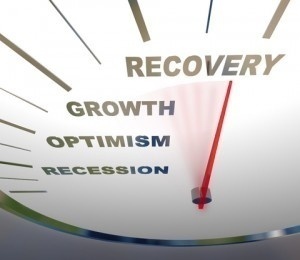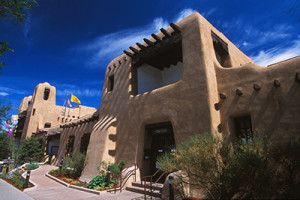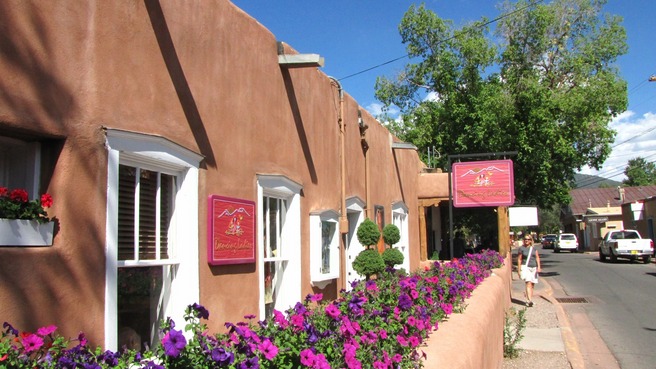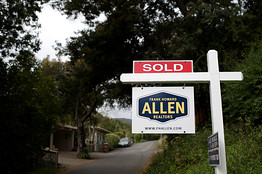Home Prices Expected to Rise 
The housing recovery is expected to grow at an annualized rate of 0.6 percent through the third quarter of this year, then gain momentum and prices are projected to grow 3.7 percent between the third quarters of 2013 and 2014 until settling down to 3.3 percent annual increases over the next three years according to Fiserv, a financial services technology provider using data from the Federal Housing Finance Agency (FHFA).
Both home prices and home sales volumes increased steadily last year, making 2012 the first positive year for both prices and sales since the housing market crash, excluding gains induced by the home buyer tax credits in 2009 and 2010.
“Although some recent real estate activity has been speculative, it seems as if buyers have more realistic expectations about housing market returns after having lived through the largest housing market crash in U.S. history,” says David Stiff, chief economist, Fiserv.
“2012 was the first year since 1997 that the housing market has resembled something recognizable as normal. For the past 15 years, home price changes and sales volumes have either been boosted by a bubble mentality or crushed by crash psychology,” continues Stiff.
“Back in 1997, housing prices grew 3 percent, just below the 5 percent long-term average rate of appreciation. From 1998 to 2006, prices appreciated at levels above 5 percent, with double-digit price increases in many of those years. Then, after 2006, the market collapsed as euphoria turned to panic. It took until the end of 2011 before housing markets finally started to stabilize. The latest Case-Shiller results show a return to a historically normal pace of price appreciation in the last year.”
The recovery in home prices has been solid and broad-based. At the end of the 2012 third quarter, prices were rising in approximately 62 percent of all U.S. metro areas, compared to 12.5 percent in the same period a year ago. Average U.S. home prices increased 3.6 percent from the third quarter of 2011 to the comparable period of 2012. Many of the metro areas that suffered the most severe declines during the housing market crash enjoyed the highest price increases in that period.
Fiserv Case-Shiller projects that by the end of 2013, home prices will be rising in nearly every metro area in the U.S. Some markets may experience short-term double-digit price jumps that could be partially reversed by price declines as large tranches of bank-owned inventory (REO) are liquidated. In other markets, price appreciation will slowly return to normal rates as home buyers regain confidence that the market has found its footing.
Stiff cautions that the parallels to previous years should not be overstated. Unlike in 1997, there are millions of homes with delinquent mortgages, in the foreclosure process, or in REO inventories listed for sale or waiting to be sold. But many trends are positive. With both prices and mortgage payments at historic lows relative to income, Fiserv Case-Shiller expects stronger demand for housing, and the sector once again having a positive impact on the economy.
“The number of new housing units being built per household is near a record low. As momentum in the housing market builds, we will see the residential real estate sector once again make large contributions to the economic recovery. If residential investment – which encompasses all direct spending on residential real estate construction and activity – returns to its 1997 level over the next two years, then housing will boost overall economic growth by 0.5 percentage points in 2013 and 2014,” Stiff continues.
“In all of the bubble-crash markets, foreclosures will have a persistent but diminishing drag on price appreciation. Since the timing of the disposition of foreclosed properties can be highly uncertain, we will witness choppy price movements as individual metro markets stabilize. For example, in late 2011, prices in Atlanta dropped sharply because of a substantial jump in REO sales, and it is possible that we will see similar, temporary price declines in other markets as subsiding waves of foreclosed properties buffet these markets. In other markets, investor demand is quickly absorbing listed REO properties, and as a result, foreclosures are no longer pulling home prices downward,” Stiff says.
The Fiserv Case-Shiller Indexes, which include data covering thousands of zip codes, counties, metro areas and state markets, are owned and generated by Fiserv. The historical and forecast home price trend information in this report is calculated with the Fiserv proprietary Case-Shiller indexes, supplemented with data from the FHFA. The historical home price trends highlighted in this release are for the 12-month period that ended September 30, 2012. One-year forecasts are for the 12 months ending on September 30, 2013. The Fiserv Case-Shiller home price forecasts are produced by Fiserv and Moody’s Analytics.
For more information, visit www.realestateeconomywatch.com.
 Santa Fe, New Mexico has been named the Best Small City in America by Condé Nast Traveler’s 26th annual Readers’ Choice Awards, a ranking of the best cities, islands, cruise lines, airlines, hotels and resorts in the world.
Santa Fe, New Mexico has been named the Best Small City in America by Condé Nast Traveler’s 26th annual Readers’ Choice Awards, a ranking of the best cities, islands, cruise lines, airlines, hotels and resorts in the world.



 WASHINGTON (January 29, 2015) – Despite interest rates being at their lowest level of 2014, pending home sales cooled in December but remained above year-over-year levels for the fourth consecutive month, according to the
WASHINGTON (January 29, 2015) – Despite interest rates being at their lowest level of 2014, pending home sales cooled in December but remained above year-over-year levels for the fourth consecutive month, according to the  s plenty in its favor. It’s an artsy town with beautiful views of the Sangre de Cristo Mountains and it’s more than 400 years old, which is flat-out cool. Riding past adobe architecture and galleries, riders can pedal to more than 50 miles of trail and choose whether to get lost in the 30-mile spaghetti bowl of twisty Dale Ball trails, head out for more technical adventures on the Whoops, or treat themselves to 8 miles of giggle-inducing downhill on the Windsor Trail.
s plenty in its favor. It’s an artsy town with beautiful views of the Sangre de Cristo Mountains and it’s more than 400 years old, which is flat-out cool. Riding past adobe architecture and galleries, riders can pedal to more than 50 miles of trail and choose whether to get lost in the 30-mile spaghetti bowl of twisty Dale Ball trails, head out for more technical adventures on the Whoops, or treat themselves to 8 miles of giggle-inducing downhill on the Windsor Trail.















